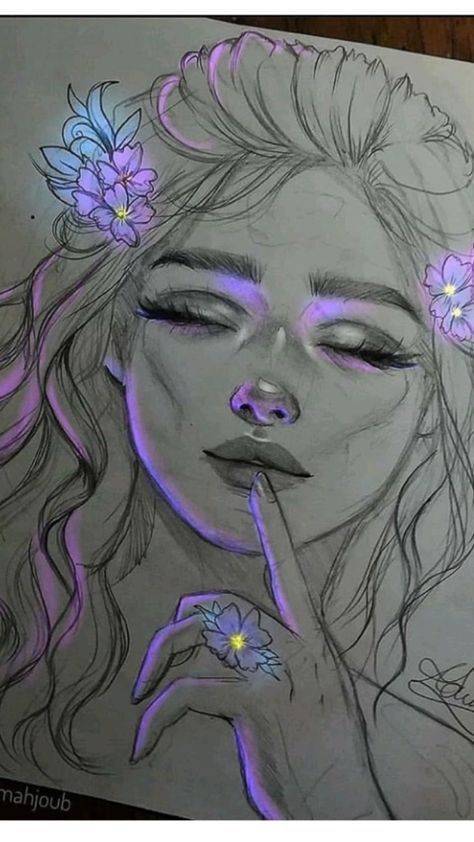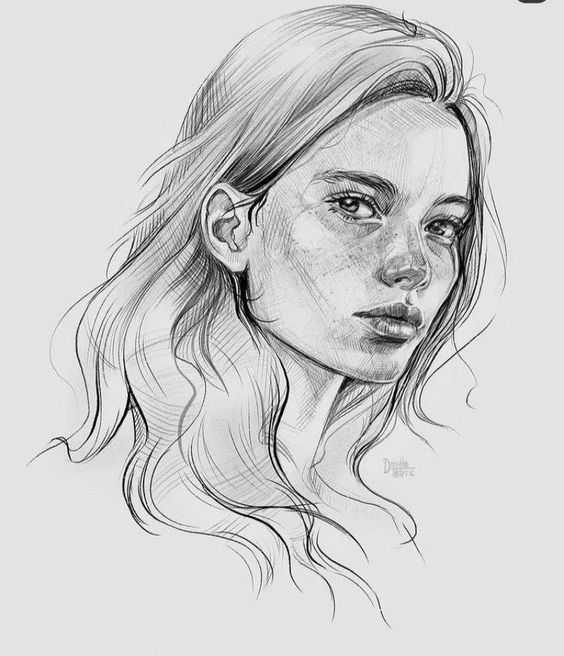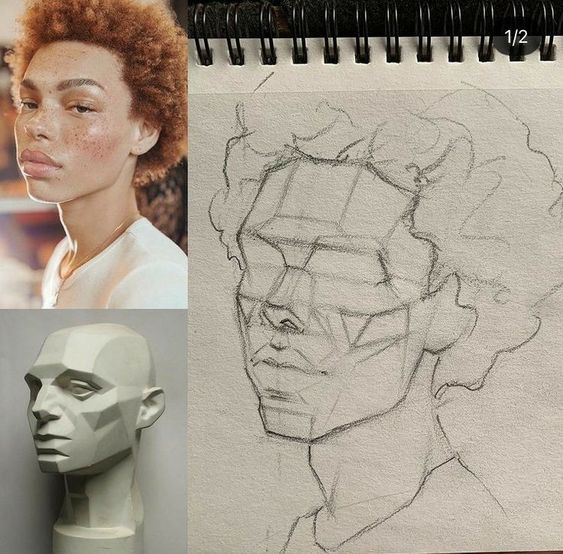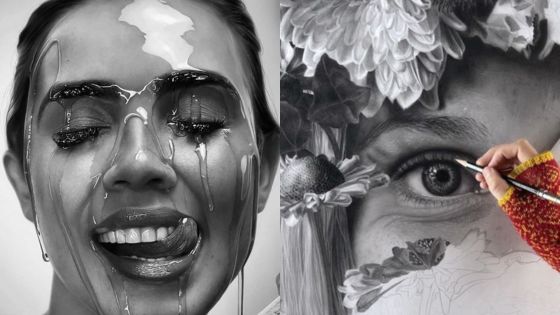

Portrait drawing is an art form that captures not just the likeness but the essence of a subject. Mastering the fundamentals can transform a simple sketch into a striking portrayal that conveys emotion and personality. Whether a budding artist or a seasoned professional, the journey through portrait drawing offers opportunities for personal expression and skill enhancement.
The techniques involved require a keen understanding of proportions, lighting, and texture. By focusing on these critical elements, artists can elevate their work from basic representations to high levels of realism. With practice and the right tools, anyone can improve their portrait drawing abilities and create compelling and engaging artworks.
Key Takeaways
- Understanding the basics enhances portrait drawing skills.
- Realism is achieved through careful observation and technique.
- Practice helps overcome common challenges in portraiture.
Foundations of Portrait Drawing


Portrait drawing relies on a solid understanding of facial anatomy, correct proportions, and the effective use of light and shadow. Mastering these foundations allows an artist to create lifelike and expressive portraits.
Understanding Facial Anatomy
An artist must familiarize themselves with the structure of the human face. The skull is the framework, and the facial muscles create expression and movement. Key elements include:
- Cranial Structure: The forehead, cheekbones, jawline, and chin shape the face.
- Soft Tissue: Skin, fat, and muscle layers impact overall appearance.
- Features: Eyes, nose, mouth, and ears each have specific anatomical relationships.
Recognizing these elements aids in accurate representation. Detailed knowledge of the underlying anatomy helps artists portray depth and realism in their drawings.
Proportions of the Face


Proportions of the face are critical for realism. A common approach is the “standard proportions” method, which includes:
- Vertical Halves: The face is often divided into equal halves through the center.
- Horizontal Sections: Key features can be placed according to proportional guidelines; the line of the eyes is typically halfway down the head.
The “Rule of Thirds” can also assist. Dividing the face into three equal parts helps determine the positioning of features such as:
- Eyes: Positioned slightly below the halfway point.
- Nose: The bottom usually aligns with the half of the chin.
- Mouth: Located about one-third below the nose.
Understanding these measurements greatly enhances accuracy.
Light and Shadow
Light and shadow play crucial roles in adding depth and dimension. Techniques like chiaroscuro focus on significant contrast between light and dark areas. Important points include:
Light Source: Identify the direction and intensity of lighting to understand how it affects the face.
Shadows: Recognize where shadows naturally occur—under the chin, around the eyes, and along the nose.
Highlights: Certain areas, like the forehead and cheekbones, often reflect more light.
Applying these principles effectively translates into realistic portraits, resulting in established depth and three-dimensionality.
Materials and Tools


A variety of materials and tools are essential for successful portrait drawing. Each choice impacts the quality and ease of the drawing process.
Choosing the Right Paper
Selecting the appropriate paper is crucial. It should have a good texture and weight to hold the medium used. Common options include:
- Bristol Board: Smooth and sturdy, ideal for detailed work.
- Drawing Paper: Has a slight texture, suitable for a softer appearance.
- Watercolor Paper: Heavyweight and capable of handling wet media.
Artists often prefer papers that can handle erasing and blending without tearing. It is also wise to choose a larger size if planning to include more detail.
Graphite Pencils and Charcoals
Graphite pencils come in various grades, indicated by numbers and letters. The hardness determines the darkness of the mark:
- H (hard): Creates lighter lines, useful for fine details.
- B (black): Produces darker marks, beneficial for shading.
Charcoal offers a different texture and depth. It can be:
- Vine Charcoal: Soft and easy to erase, good for sketching.
- Compressed Charcoal: Darker and richer, ideal for bold strokes.
Choosing between graphite and charcoal depends on the desired style and effect.
Erasers and Blending Tools
Erasers play a significant role in portrait drawing. Different types include:
- Kneaded Eraser: Malleable, perfect for lifting graphite softly.
- Vinyl Eraser: Firm, effective for clean corrections.
Blending tools enhance the shading process. Options include:
- Tortillons: Paper stumps for smooth transitions.
- Blending Stumps: Dense, robust tools for broader areas.
Using these tools strategically can help achieve realistic skin textures and soft shadings in portraits.
Techniques for Realism


Achieving realism in portrait drawing requires a combination of rendering techniques, tonal values, and meticulous detail work. Each aspect plays a crucial role in replicating the essence of the subject.
Rendering Techniques
Different rendering techniques can significantly enhance the realism of a portrait. Hatching involves drawing closely spaced parallel lines, while cross-hatching uses intersecting lines to create depth.
Blending is effective for smoothing out transitions between tones. Various tools, such as tortillons or blending stumps, can facilitate this process.
Stippling, which consists of small dots, can add texture and depth to facial features. Choosing the right method depends on the desired effect and must align with the overall visual goals of the drawing.
Achieving Tonal Values
Accurate tonal values are essential for realism in portraiture. Artists should observe the light source and how it affects shapes and colors.
Using a value scale can help determine contrast; darker areas should be complemented by lighter ones for balance.
Layering is a technique where artists gradually build up tones. This method creates a more lifelike representation as it allows for smoother transitions and richer depth. Observing the subject closely will aid in identifying subtle tonal shifts throughout the face.
Detail Work
Detail work is critical to capturing the unique features of a subject. Artists should focus on specific areas such as the eyes, lips, and skin texture.
Attention to details like eyelashes or freckles can elevate a portrait from flat to engaging. Employing fine-tip pencils or brushes can aid in achieving precision.
Working in small sections allows for concentrated efforts, ensuring that each part of the portrait is well-defined. This meticulous approach fosters a sense of realism that draws viewers in and creates an emotional connection.
Steps of Portrait Drawing


Portrait drawing involves a systematic approach to capture the likeness and essence of a subject. Key elements include starting with basic shapes, gradually adding features, and refining the artwork through careful review.
Laying the Basic Shapes
To begin, an artist should establish the fundamental shapes that compose the face. Using light pencil strokes, they can outline an egg-shaped head, placing guidelines for the centerline and eye level. This structure forms a foundation for proportions.
Next, they add simple geometric shapes to represent key features. For instance, circles for eyes, a triangle for the nose, and an oval for the mouth help in visualizing placements. These shapes should be proportionate and symmetrically aligned to ensure accuracy.
During this stage, artists should not worry about details. The focus is on capturing the overall structure and proportions. Continuous adjustment is advisable to achieve a balanced look before moving to the next step.
Adding Features and Details
After establishing basic shapes, the next step is to outline facial features with more precision. The artist begins refining the guidelines, turning circles into defined eyes, adjusting the nose, and shaping the mouth.
Details such as the curve of the lips, the arch of the eyebrows, and the contours around the eyes are critical. Artists should observe their subject closely, noting unique characteristics that add individuality.
In this phase, shading can also begin. Lightly applying shading enhances depth and dimension. Artists should pay attention to light sources, as shadows contribute to a three-dimensional effect.
Refining and Reviewing
The final step involves careful refinement of the drawing. Artists review each feature, making adjustments to ensure accuracy and harmony. This includes erasing unnecessary lines from earlier stages while solidifying the final outlines.
Shading requires careful attention to detail, allowing for smooth transitions between light and shadows. Artists must evaluate their work from a distance to capture a clear view of the portrait.
Feedback from peers or instructors can offer valuable insights for improvement. Ultimately, this stage solidifies the drawing, ensuring it captures the essence of the subject accurately and artistically.
Common Challenges


Portrait drawing involves various challenges that artists frequently encounter, impacting their ability to create accurate representations. Key difficulties include managing perspective and foreshortening, effectively capturing likeness, and conveying dynamic expressions.
Perspective and Foreshortening
Perspective plays a critical role in portrait drawing. When subjects are viewed from different angles, the proportions can shift dramatically. Foreshortening complicates this further, as parts of the face may appear closer than they are, leading to distortions.
To address this challenge, artists should practice drawing from life, which helps develop an understanding of depth. Techniques such as creating reference points can aid in maintaining proper proportions. Regularly using grids can also assist in ensuring accuracy despite angles. Mastery in these areas can significantly enhance the realism of a portrait.
Capturing Likeness
Achieving a likeness is one of the most challenging aspects of portrait drawing. Every face has unique features, and subtle differences can make or break a portrait. The key is to focus on the shapes and proportions of the features, rather than getting caught up in detailed rendering.
Using a reference image can help identify key characteristics. Artists can benefit from measuring distances between features and comparing them to establish correct proportions. Additionally, sketching multiple studies of the subject can refine the artist’s perception and ability to capture the essence of the face effectively.
Dynamic Expressions


Conveying dynamic expressions poses another significant challenge in portrait drawing. Emotions can alter facial structure, making it essential for the artist to understand how muscles influence appearance. Capturing these subtleties requires keen observation and quick sketching skills.


Artists should practice drawing different emotions to familiarize themselves with various expressions. Noting how eyebrows, mouths, and eyes shift can guide an artist in effectively portraying emotion. Using reference images or live models in different emotional states can provide valuable insights into how expressions can impact overall likeness and character in a portrait.
- 1.4Kshares
- Facebook0
- Pinterest1.4K
- Twitter0


